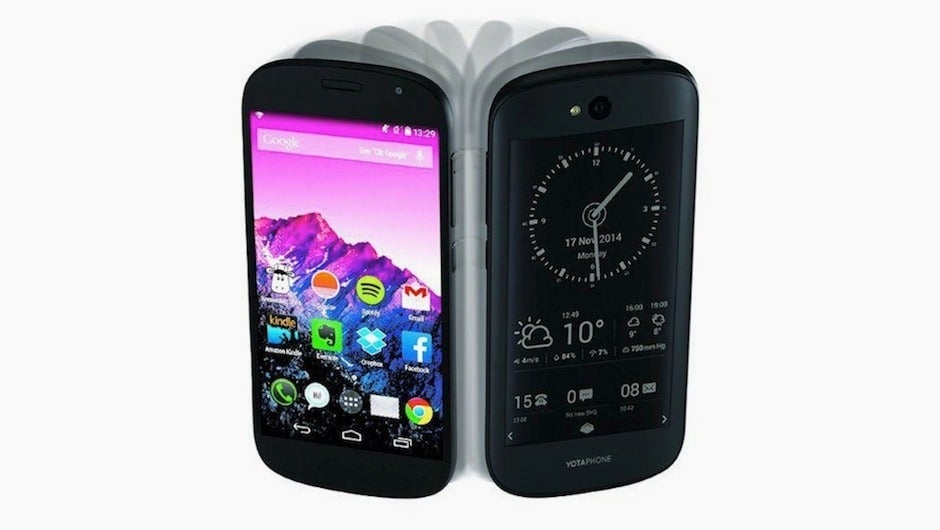This is who to thank if your next phone has two screens
Three years ago, entrepreneur Vladislav Martynov got a call from a friend in Russia, suggesting that the two embark on a project to build a smartphone company. Martynov, then based in Canada and actively investing in startups after stints at Microsoft in Seattle and at a firm in Denmark, agreed—but knew they would have to create something truly different.


Three years ago, entrepreneur Vladislav Martynov got a call from a friend in Russia, suggesting that the two embark on a project to build a smartphone company. Martynov, then based in Canada and actively investing in startups after stints at Microsoft in Seattle and at a firm in Denmark, agreed—but knew they would have to create something truly different.
“The innovation had stopped,” he says. Considering the baffling array of near-identical devices on the market today, there seemed little point in producing yet another black slab with a nice screen.
What they came up with, first shown in public at the Consumer Electronics Show in Las Vegas last year, was indeed different. The Yotaphone, a high-end Android device, came with a standard-issue, high-definition screen on the front and, on the back, an always-on E ink display. It wowed the crowd and won an award for the “hottest mobile device of 2013.” This week, Martynov is on the move, traveling between European capitals promoting the Yotaphone’s more sophisticated successor, Yotaphone 2.
Two screens, one SIM
Why, you might ask, does a phone need two screens? The E ink screen remains on, allowing people to quickly glance at their phones to review new texts, emails, the time, or the weather, without having to turn the main screen on and off. It also is much more readable in bright sunlight, which is an important consideration in places like the Middle East and India (though it doesn’t have a slot for a second SIM, a standard feature in those places).
Martynov and his colleagues—the company has grown to some 150 employees spread over eight countries—have been deliberately slow with marketing the phone. A relatively small number of units were produced for first version. The idea, he says, was to aim it at early adopters and learn what they could from seeing the phone out in the wild. Among the suggestions that made it to the second version was full touch capability for the E ink screen (the first only had a small touch strip at the bottom).
Encouraged by the reception accorded to the first device, Yota Devices produced a much larger number of units for the sequel—somewhere around 1 million—and invested heavily in marketing. The battery life, assuming you interact more with the E ink screen than the full-color one, is a couple of days long. And the phone has a nifty screenshot function that will retain a map or boarding card on the E ink display even after the battery has died. It is undoubtedly an refreshing change in a world of me-too devices.
It also is expensive. At £555 ($865) in the UK, it is comparable to the iPhone. But Martynov hopes that just as iPhone launched a thousand black slabs, the Yotaphone, too, will inspire imitators. That, says Martynov, will be when he will feel satisfied that Yotaphone has truly been successful.